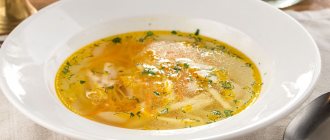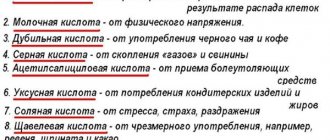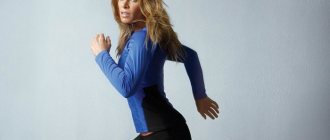According to WHO statistics, every third person does not drink milk. With the popularization of veganism and various methods for losing weight, cases of voluntary refusal of this product are becoming more and more frequent. Many are forced to exclude it from their diet for health reasons. A dairy-free diet becomes especially important for children with intolerance to this product. A lactose-free diet can become absolutely complete for both adults and infants. Today we will talk about all the important aspects of such nutrition: what to feed a child with allergies, what to replace milk with.
General recommendations
A dairy-free diet is perfect for people who want to lose excess weight, because various fats that are found in dairy products are excluded from the diet. Of course, it will be difficult to replace this product with another, especially if it is one of your favorites, but you can take soy milk or almond milk instead.
For snacks, fruits and vegetables, dried fruits, raisins, and any nuts are suitable.
However, you should not overdo it with the duration of the diet; a dairy-free diet for weight loss should last from 1 to 2 weeks, since milk is a source of healthy proteins and calcium. The only exception is if you are allergic to dairy products.
The Ubiquitous Gluten
It turned out to be gluten. In the food industry, the properties of gluten are exploited - the ability to increase volume and shelf life.
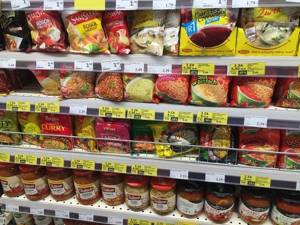
The consumer receives gluten in greater quantities than he or she may realize, in both overt and subtle forms. We have long mastered the art of reading labels, where important information is written in small print about what we are going to include in the biochemical cycle of the body.
The fact that gluten is “unofficially” present in products containing modified starch and additives has been confirmed. The motivation for using a gluten-free diet for body shaping by healthy people is based on this fact.
Textured vegetable protein, modified starch, hydrolyzed vegetable protein - this means the product contains gluten!
- Porridges made from oats, barley, wheat, rye
- Bread made from traditional flour
- Sausages, sausages, minced meat
- All sauces
- Sweets
- Ice cream, shelf-stable yoghurts, sweet curds, cheesecakes
- Canned fish, meat
- Alcoholic drinks made from cereals
- Instant coffee, flavored tea, tea bags
- Convenience foods, carbonated sweet drinks, etc.
The fact is that with the exception of cereals, these products are not welcomed by other methods. They are not included in the list of recommended “healthy food plates”. Thus, the vast majority of foods prohibited during a gluten-free diet are also excluded during a healthy lifestyle.
Sample menu of a dairy-free diet for weight loss
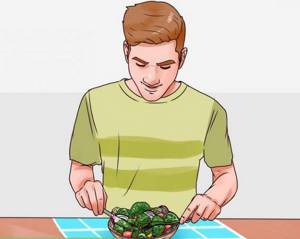
The fight against excess weight is one of the main reasons for giving up dairy products.
The sample menu is not a reference, and when choosing a set of products and dishes, you should proceed from your individual preferences.
Sample dairy-free diet menu for the day:
Breakfast:
- omelette with vegetables;
- fruit puree (bananas, strawberries with soy milk);
- fruit juice, coffee or tea.
Dinner:
- soup made from lean meats or fish;
- vegetable salad (cucumbers, tomatoes, herbs, olive oil);
- peach or nectarine;
- tea.
Dinner:
- fish or meat meatballs;
- potatoes baked in the oven;
- lettuce leaves;
- fruit juice.
General rules
So, what should you do if you have firmly chosen a lactose-free diet?
- As we already said, first of all, create a menu for every day for the week.
- The main dairy substitute will be soy milk. Use toffa instead of yogurt.
- The calcium needed by the human body can be obtained from green vegetables, seafood, almonds or sesame seeds.
- Butter can be replaced with margarine without loss to the body.
- But you will have to refuse cream, even if it is in dry form.
Important! Before taking the above-mentioned diet, be sure to consult your doctor.
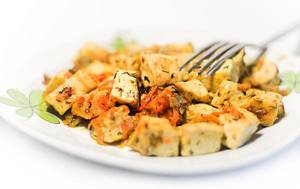
About soy products, recipes
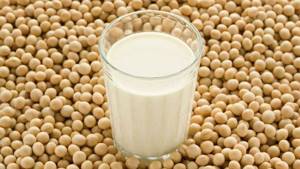
More and more people are switching to soy products, and a dairy-free diet is becoming more popular.
How can you use soy milk?
- For breakfast cereals.
- To prepare cappuccino: brew coffee. Bring the milk to a boil, beat for 30 seconds until well foamed, pour the foam into the coffee and sprinkle cocoa on top.
- It is better to whisk soy yogurt before using. You can add it to the first hot, but not boiling dishes, so that it does not become grainy.
- Sauce for ice cream or pancakes. Heat half a glass of soy cream, add 1 tbsp. l sugar and a bar of dark chocolate.
- Fruit dessert: Prepare applesauce and mix with whipped soy yogurt.
An apple from an apple tree...
You should not mix gluten-free diets with a group that triggers the process of ketosis – the body’s reserve “nutrition” that burns accumulated fat under certain conditions. They are similar in the list of permitted products, in terms of severity. But: they use a different mechanism, preventing the consumption of carbohydrates, so that the body uses a reserve reserve, “deciding” that it is in an extremely hungry situation. Such diets have contraindications!
The group includes:
- Diets with the KETO prefix, which you can easily get acquainted with in the gym.
- Dukan diet, Kremlin diet - high protein and low carbohydrates.
- Low-carbohydrate diets – those that exclude sugar and foods containing it.
Dairy-free diet for a child: general recommendations

Allergies can begin at any age, but often they begin in children from the first months of their life. Many factors contribute to the occurrence of this nonspecific reaction, for example, uncomfortable clothing, water, food, animal hair, pollen, etc. It happens that allergies are provoked by milk protein, which is necessary for a child, especially at this age, so this is a huge problem for parents .
An integrated approach is required to treat allergies. But nutrition comes first. Often, eliminating the main allergen from the diet helps to quickly reduce allergic reactions.
Children's dairy-free diet and main recommendations for it:
1. Eliminate dairy products (cottage cheese, kefir, sour cream, ice cream, etc.) from the diet, as well as other products (if any) that cause the baby’s allergies.
2. Include more meat in your diet: this product will compensate for the lack of protein.
3. Consume calcium tablets, or soy or rice milk, which will replenish the calcium content in the body.
4. Switch to milk and fermented milk formulas (for infants).
5. If possible, cook dishes in a double boiler.
A complex approach
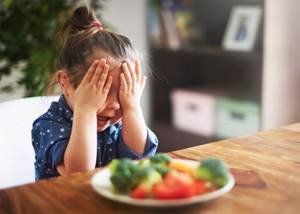
It is important for parents to understand that a dairy-free diet for children alone will not cure your baby of allergies. It is necessary to take an integrated approach, in which proper nutrition of the child will be one of the fundamental elements of his excellent well-being. A professional pediatrician will advise you on other issues that will help you cope with this problem.
In this article we will pay increased attention to a dairy-free diet for children. We emphasize that a competent attitude to a child’s nutrition before he reaches 3 years old will contribute to a significant expansion of his diet by the age of seven. Such nutrition can already be called complete.
Sample dairy-free diet menu for a child
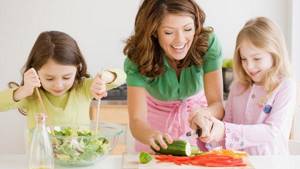
This menu is not a reference for every child, since it should be based on his age, individual preferences and concomitant diseases.
Dairy-free diet for a child (sample menu):
- Breakfast: Hercules porridge cooked in water with fresh fruits (or pureed from them), raisins, nuts; fruit compote.
- Lunch: pea soup; mashed potatoes with a piece of lean meat; green tea.
- Dinner: carrot and semolina casserole; cocoa drink brewed with water.
Prohibited Products
In any case, a mother who is breastfeeding is prescribed a dairy-free diet. It is not recommended to use and is recommended to limit:
- Animal milk;
- Whole cow and goat milk products;
- Serums of animal origin;
- Sausages;
- Broths based on fatty meat;
- Nuts;
- Chocolate and its derivatives;
- Mustard and mustard-based sauces, mayonnaise sauces.
Anything spicy, fatty or sweet is subject to exclusion from the diet. The only exceptions are butter and cottage cheese, since they have a very small amount of lactose.
Dairy-free diet dishes for children
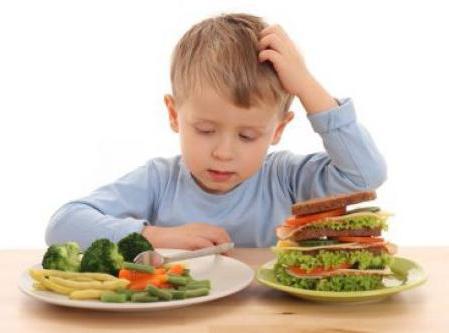
Stew with meat
Boil 0.5 kg of lean meat, cut into pieces. Chop an onion, a small grated carrot, a small grated beet, 2-3 medium-sized potatoes. Heat 1 tbsp. l of vegetable oil in a frying pan, put the meat, then add the potatoes, fry a little and simmer for about 5 minutes under the lid, pour in the onion, after a minute - the carrots, after another minute - the beets and add water so that it covers the contents, cover with a lid, reduce the heat and simmer until done.
Fish soup
Heat 1 tbsp in a frying pan. l vegetable oil. Pour in the diced onion, add salt and pour in a liter of hot water. Wait until it boils. Add black pepper on the tip of a knife, grated carrots and 2-3 diced potatoes. Cover with a lid for half an hour. At this time, clean the fish, remove the bones and backbone and add the fish to the soup. Cook until the fish is done.
Healthy dairy-free recipes
Finding dairy-free recipes is easy. For an adult menu, in general, for any dish it is enough to simply replace animal milk with a plant-based prototype. It's a little more complicated with baby food and recipes. It is best to take them on specialized forums where caring mothers share their experiences.
Rice feeding for babies. Rinse half a glass of round rice several times in clean water, then add two glasses of water and put on fire. Cook until viscous consistency (30-35 minutes). Place a spoonful of cooked rice into a fine strainer and strain. The resulting mass should be liquid without lumps. If necessary, you can add boiled water or wipe again.
Dairy-free pancakes for children and adults. Sift 2 cups of flour into a deep container, add 2 tablespoons of vegetable oil and a little sugar. Stir everything well and pour in 4 cups of warm water, beat with a mixer. Fry the finished dough in a small amount of oil. Recommended for children from 1.5 years old, you can add fruit puree to them.
Diet pancakes for breakfast. In a blender, puree several chopped potatoes, one onion and dill. Add sifted flour to the resulting mass until the dough becomes dense. Place potato pancakes in a frying pan using a damp spoon. Suitable for children from two years old and adults.
Menu for children over 1 year old with the Ado diet
In Soviet times, the famous scientist and pathophysiologist A.D. Ado began studying the problems of allergic diseases and developing special diets that could prevent new exacerbations of the disease.
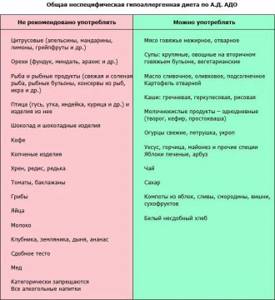
It was he who first established that there are certain foods that can trigger a number of inflammatory changes in the body and easily cause an allergic reaction. He also noted that there are products that have opposite properties. They are safer for the body and practically do not cause allergies.
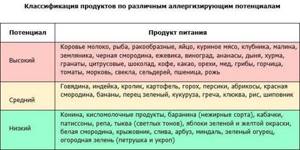
The result of his scientific work was the Ado system of proper nutrition. This is a prototype of a hypoallergenic diet. It excludes all products that can cause skin rashes, with the obligatory inclusion of neutral products. Ado composed his diet so that all incoming substances were selected in quantities sufficient for the active growth and development of the child’s body.
The advantages of his technique include:
- a detailed analysis of all products that trigger allergic reactions and their complete exclusion from the children's menu;
- eliminating all allergens from the diet at once allows you to quickly relieve inflammation and eliminate all unfavorable symptoms of the disease;
- the possibility of gradual introduction of new products, with mandatory monitoring of the child’s condition after such introduction.
Of course, there are also disadvantages:
- Prescribing a diet to all children without prior examination and laboratory determination of individual sensitivity to different foods. Hadot compiled his diet at the end of the twentieth century, when there was no extensive laboratory capacity to conduct such highly accurate tests.
- Low specific sensitivity. The diet is used for all children and adolescents without taking into account the individual level of immunity and concomitant chronic diseases.
Sometimes hypersensitivity occurs to gluten or wheat, banana and rice proteins. Sensitivity of the body to potatoes, buckwheat, corn, soybeans and legumes is less common.
At the same time A.D
Ado highlights foods that, if you are allergic to, you should be wary of “cross” foods in your diet

The Ado treatment table can be represented as follows:
Please note that the menu occasionally includes products with moderate allergenic potential
First day of the week
- Breakfast: Oatmeal with water. A couple of dry crackers.
- Second breakfast: Yogurt.
- Lunch: Soup with lean beef (no carrots). Salad of cucumbers, Chinese cabbage and corn, dressed with vegetable oil.
- Afternoon snack: Pear jelly with dry biscuits.
- Dinner: Steamed lean lamb quenelles with chopped cauliflower. Apple compote.
Second day
- Breakfast: Buckwheat flakes with kefir.
- Second breakfast: Sandwich with butter.
- Lunch: Boiled lean veal with mashed potatoes and cauliflower. Berry jelly.
- Afternoon snack: Low-fat cottage cheese with sugar.
- Dinner: Stewed lean lamb with vegetables and peas.
The third day
- Breakfast: Millet porridge with dried fruits.
- Second breakfast: Apple baked in the oven.
- Lunch: Beef meatballs with noodles. Zucchini and greens salad.
- Afternoon snack: Galette cookies with kefir.
- Dinner: Stewed vegetables and boiled buckwheat.
Fourth day
- Breakfast: Buckwheat pancakes with yogurt.
- Second breakfast: A glass of kefir.
- Lunch: Cabbage soup with sour cabbage and boiled veal. Cucumber and dill salad.
- Afternoon snack: Bun with kefir.
- Dinner: Veal balls with vegetable filling.
Fifth day of the week
- Breakfast: Pancakes with cottage cheese.
- Second breakfast: Biscuit crackers with unsweetened tea.
- Lunch: Stewed horse meat stew. A piece of bran bread.
- Afternoon snack: Plain yogurt with a little sugar.
- Dinner: Oven-baked lean beef cutlets with rice.
Sixth day
- Breakfast: Multigrain porridge with water.
- Second breakfast: A piece of bread with apple jam. Unsweetened tea.
- Lunch: Vegetable soup with beef meatballs.
- Afternoon snack: Low-fat cottage cheese with kefir and sugar.
- Dinner: Vegetable stew with veal.
Seventh day
- Breakfast: Corn porridge with diluted milk.
- Second breakfast: Baked apple.
- Lunch: Lean veal broth with freshly prepared homemade noodles. Cucumber and parsley salad.
- Afternoon snack: Biscuits with pear jelly.
- Dinner: Stewed cabbage and beef meatballs.
What foods cause allergies: degree of risk
A child can react to almost any product in the first days of his life. The manifestation and severity of allergic reactions depend on the individual sensitivity of the body to any allergen.
Most often, diathesis in children appears after products from the following list enter the mother’s body:
- citrus;
- chocolate;
- eggs;
- various berries.
Food that contains chemical dyes, preservatives and other harmful additives is very harmful for babies.
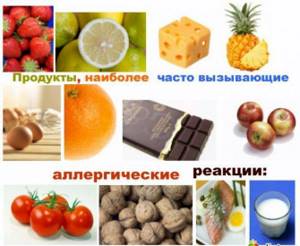
A low allergenic (hypoallergenic) diet menu should not include these products
The hypoallergenic diet presents a list of foods that need to be excluded or reduced to a minimum in the menu of a nursing mother.
Low risk
List of hypoallergenic products that are least likely to cause allergic reactions:
- Fermented milk products without sugar and dyes.
- Dietary meats (chicken, rabbit, turkey, beef).
- Low-fat fish varieties.
- Any vegetables that are white or green.
- Cereals – buckwheat, rice, oatmeal.
- Vegetable oils.
- Any fruit that is green or white.
- Decoctions of rose hips and dried fruits.
- Mineral water.
List of foods with average risk of allergenicity
With great caution, the mother of a breastfed baby can eat:
- Bread made from wheat and rye flour, porridge from corn grits.
- Highly fatty meats (pork, lamb, duck).
- Fruits and berries that are red, orange and yellow (red apples, peaches, bananas, apricots, cherries, strawberries, cherries, watermelon).
- Potatoes, beans, paprika.
High risk
Here is a list of foods that most often cause allergies in children under one year of age:
- Red fish and any caviar.
- Cow's milk.
- Cheese.
- Eggs.
- Any smoked meats.
- Home canning.
- Grape.
- Eggplant.
- Plums.
- Mushrooms.
- Chocolate.
- Citrus.
- Yogurts with dyes and sugar.
You should not introduce exotic foods into your diet: sushi, wasabi, mango. Allergic reactions are caused not only by the products themselves, but also by dishes prepared with their content. For many years, it was believed that breastfeeding women benefit from drinking plenty of whole milk, but drinking it can lead to particularly severe forms of diathesis in the child.
A hypoallergenic diet for nursing aims to exclude all foods that are dangerous for the baby from the mother’s diet. After a month or two, foods in small portions are returned to the woman’s diet. This approach allows the baby to adapt to new forms of nutrition. As the child grows, his intestines gradually mature and react less to allergens, and therefore the risk of allergic reactions in him decreases. A nursing mother should follow a hypoallergenic diet until the baby is one year old. During this period, the mother must keep a table every day, in which all food innovations are noted. Recipes for the weekly menu are selected taking into account changes in the mother’s diet associated with the absence or presence of allergic reactions in the baby.






